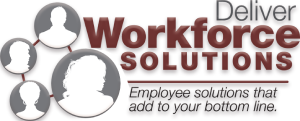
From new technologies to unexpected events like the COVID-19 pandemic, things are always changing in the modern workplace.
Now, the question is, how can your company deal with all these changes in a smart way? Well, it’s actually pretty simple: put your resources into your most valuable asset—your employees.
The trick here is to create a flexible work environment where your team can easily adjust to new situations. This agile approach means your employees can roll with the punches, so to speak.
This blog will explore agile workforce planning, covering its definition, benefits, and how it differs from traditional workforce planning.
On top of that, we’ll look at the typical problems that companies face in today’s ever-changing world. And most importantly, we’ll give you a step-by-step guide to using agile workforce planning to handle those issues effectively.
What is agile workforce planning, and why is it important?
Agile workforce planning is a dynamic approach businesses use to stay nimble and responsive to changing circumstances.
It involves swiftly adjusting a workforce’s size and roles to meet evolving business needs. An agile workforce is adaptable, independent, and fast.
Why is this important? Well, in the last 5 years, disruptions in the business world have become more common.
To deal with these changes, your company needs a workforce that’s ready to adapt on a dime, even when things get tricky.
How does agile workforce planning differ from traditional workforce planning?
Agile workforce planning sets itself apart from traditional workforce planning when it comes to operating in the face of sudden changes.
Traditional workforce planning often follows a fixed action plan that works well under normal circumstances. But when a significant disruption takes place, it may no longer be effective.
On the other hand, agile planning is adaptable in the face of disruptions or unexpected events.
In these instances, the plan can be reviewed and adjusted to continue serving the organization’s needs effectively.
Benefits of agile workforce planning
There are many fantastic benefits of an agile workforce, including:
Right people, right place
With an agile approach, you can optimize productivity by matching your workforce with your current business needs. This means having the right people in the right roles, at the right time – leading to improved business efficiency.
Competitive advantage
Responding quickly to market changes gives your organization a competitive edge. You can seize opportunities faster and navigate challenges better than your competitors who haven’t cultivated agile workforces.
Talent development
As an agile organization, you’ll encourage continuous employee learning and development. Agile employees can acquire new skills and adapt to evolving job requirements, and this growth mindset benefits both you and your team.
Better communication and collaboration
Promoting a more agile workforce improves communication and collaboration, making sure everyone in your team works together seamlessly.
When everyone is on the same page, challenges are tackled more efficiently, leading to innovative solutions and improved decision-making.
Cost savings
Agile workforce planning can also help reduce unnecessary labor and operational costs. When you have the right workforce in place, you’re not overstaffed and can allocate resources more effectively.
Examples of modern workplace disruptions that require agile workplace planning
Agile workforce planning isn’t limited to specific industries or business sizes. It’s a versatile approach suitable for the public and private sectors and businesses of all sizes.
Adaptability allows agile businesses to navigate uncertainties and challenges, including:
Automation and workforce change
Many businesses have turned to automation to streamline their operations, reducing the need for human workers to perform specific tasks.
But this has also created new job opportunities for people who maintain and upgrade the automated machinery. This shift has transformed the nature of work as we know it.
Transition to AI
Instead of interacting with live customer service representatives, businesses are increasingly using chatbots and text-based communication to address customer inquiries. This change reflects the integration of technology in modern customer service.
Generational workforce shift
The workforce is undergoing a significant generational shift. As Baby Boomers retire, younger generations like millennials and Gen Z dominate the workforce. These younger employees often prioritize work-life balance, influencing businesses to adapt to changing expectations.
Evolving workforce composition
Traditionally, businesses mainly consisted of W2 employees. But, the contemporary workforce includes many contractors, freelancers, gig, and remote workers. This shift signifies a change in how businesses structure their workforce.
Agile workforce planning guide
To successfully achieve business agility, it’s important to take the following steps:
- Understand your goals: Firstly, you’ll need to define your business goals. Are you expanding, reducing costs, or adapting to market changes?
- Analyze your current workforce: Take a good look at your existing employees. What skills do they have? Do you have the people you need to achieve your business’s goals, or do you need to make adjustments?
- Forecast future needs: Figure out which skills might be missing in your current team that you’ll need to gain to meet your future goals. This could involve hiring more people, retraining existing employees, or reorganizing teams.
- Flexible team structures: Create teams that can easily adapt to different tasks. This might involve cross-training employees so they can switch roles as needed.
- Regular reviews and adjustments: Continuously assess your workforce’s performance and adjust as necessary. Be ready to change your plans as the business environment evolves.
- Communication: Keep everyone in the loop. Make sure your employees understand the goals and changes happening in the workforce. Encourage feedback and open communication.
- Technology and tools: Invest in tools and technology that can help your workforce be more agile. This might include software for project management, communication, or data analysis.
- Measurement and feedback: Establish clear metrics to evaluate the success of your agile workforce planning efforts. Use feedback and data to make informed decisions.
Key takeaway
Agile workforce planning is a dynamic process that acknowledges the uncertainty of the future.
While we can’t predict it with certainty, we can make informed decisions by forecasting and adapting to changing circumstances.
Continuous testing and measurement of the plan over time serve as our compass, helping us stay on course and work toward our goals.
Deliver Workforce Solutions: Your path to attaining workforce agility
Creating an agile and effective workforce plan can be complex, but you don’t have to tackle it alone. Deliver Workforce Solutions is your partner in navigating this journey.
And if you need assistance with your recruitment strategy, we’re also here to help with all your talent management needs.
We offer tailored strategies and proven processes to help you attract, nurture, and retain exceptional talent within your organization.
For a complimentary consultation, reach out to Kathy at [email protected]. Together, we can pave the path to your workforce’s brighter and more resilient future.
